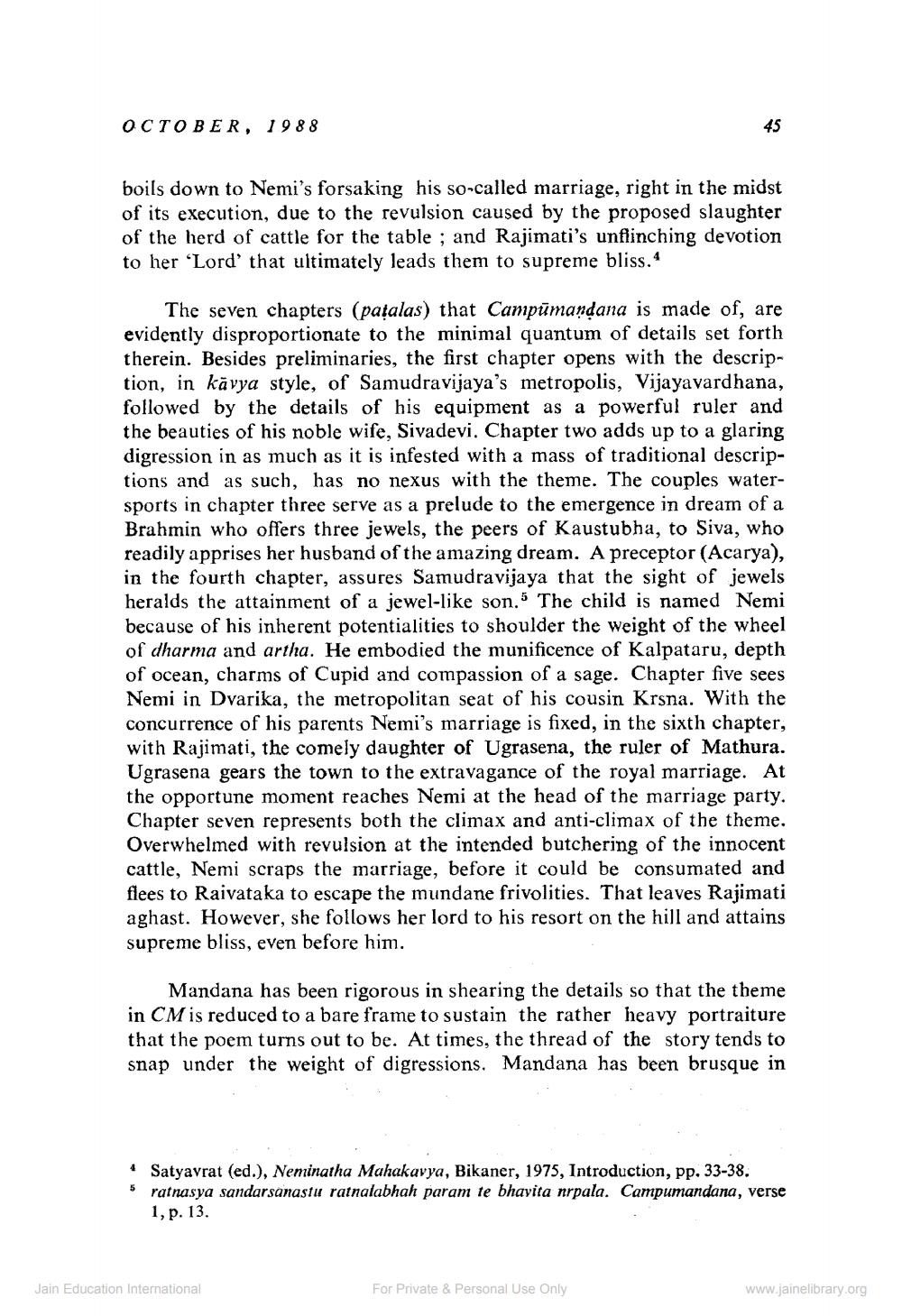________________
OCTOBER, 1988
boils down to Nemi's forsaking his so-called marriage, right in the midst of its execution, due to the revulsion caused by the proposed slaughter of the herd of cattle for the table ; and Rajimati's unflinching devotion to her 'Lord' that ultimately leads them to supreme bliss. 4
The seven chapters (patalas) that Campümandana is made of, are evidently disproportionate to the minimal quantum of details set forth therein. Besides preliminaries, the first chapter opens with the description, in kävya style, of Samudra vijaya's metropolis, Vijayavardhana, followed by the details of his equipment as a powerful ruler and the beauties of his noble wife, Sivadevi. Chapter two adds up to a glaring digression in as much as it is infested with a mass of traditional descriptions and as such, has no nexus with the theme. The couples watersports in chapter three serve as a prelude to the emergence in dream of a Brahmin who offers three jewels, the peers of Kaustubha, to Siva, who readily apprises her husband of the amazing dream. A preceptor (Acarya), in the fourth chapter, assures Samudravijaya that the sight of jewels heralds the attainment of a jewel-like son.5 The child is named Nemi because of his inherent potentialities to shoulder the weight of the wheel of dharma and artha. He embodied the munificence of Kalpataru, depth of ocean, charms of Cupid and compassion of a sage. Chapter five sees Nemi in Dvarika, the metropolitan seat of his cousin Krsna. With the concurrence of his parents Nemi's marriage is fixed, in the sixth chapter, with Rajimati, the comely daughter of Ugrasena, the ruler of Mathura. Ugrasena gears the town to the extravagance of the royal marriage. At the opportune moment reaches Nemi at the head of the marriage party. Chapter seven represents both the climax and anti-climax of the theme. Overwhelmed with revulsion at the intended butchering of the innocent cattle, Nemi scraps the marriage, before it could be consumated and flees to Raivataka to escape the mundane frivolities. That leaves Rajimati aghast. However, she follows her lord to his resort on the hill and attains supreme bliss, even before him.
Mandana has been rigorous in shearing the details so that the theme in CM is reduced to a bare frame to sustain the rather heavy portraiture that the poem turns out to be. At times, the thread of the story tends to snap under the weight of digressions. Mandana has been brusque in
1 Satyavrat (ed.), Neminatha Mahakavya, Bikaner, 1975, Introduction, pp. 33-38. 5 ratnasya sandarsanastu ratnalabhah param te bhavita nrpala. Campumandana, verse
1, p. 13.
Jain Education International
For Private & Personal Use Only
www.jainelibrary.org




